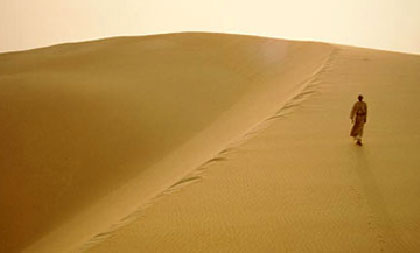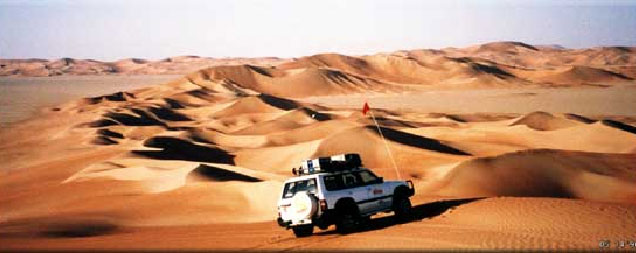The Rub al Khali is the world's largest sand desert. It has an area of more than 583,000 square kilometers and covers about 25% of the area of Saudi Arabia, as well as parts of Oman, Yemen, and the United Arab Emirates to create an arid wilderness larger than France. It holds roughly half as much sand as the Sahara, which is 15 times the Empty Quarter's size but composed mostly of graveled plains and rocky outcrops.
The desert stretches from the highlands of the Nejd to the north to the plateaus of Hadhramaut in Yemen; it slopes from an altitude of 1,006 m in the west to near sea level in the east. The unbroken sweep of pure sand was formed over eons. Water and wind eroded volcanic highlands and dry seabeds down to pebbles and grains, which were blown into huge dunes.
Sand dunes rise to over 200 m in the southwest; in some parts the dunes reach a height of 300m. Rub’ al Khali is connected to the Nafud desert in the north by the Dahna, a narrow corridor 1,287 km long. The desert is extremely dry and virtually uninhabited.
Summer temperatures range from below freezing at night to 60C at noon.
Bedouin tribes have adapted to the harsh landscape and find enough grazing grounds for their camels on fringes of the Empty Quarter. Though years can go by with no rainfall, some plants such as saltbushes and grasses survive in this climate. Some animals have adapted to desert life, such as the sand fox, which eats rodents and reptiles and need little water. Desert hares stay in deep burrows during the daytime heat.
The Empty Quarter is one of the most oil-rich places in the world. Vast reserves of excellent quality oil have been discovered. Al-Ghawar oil field is one of the world's largest.




